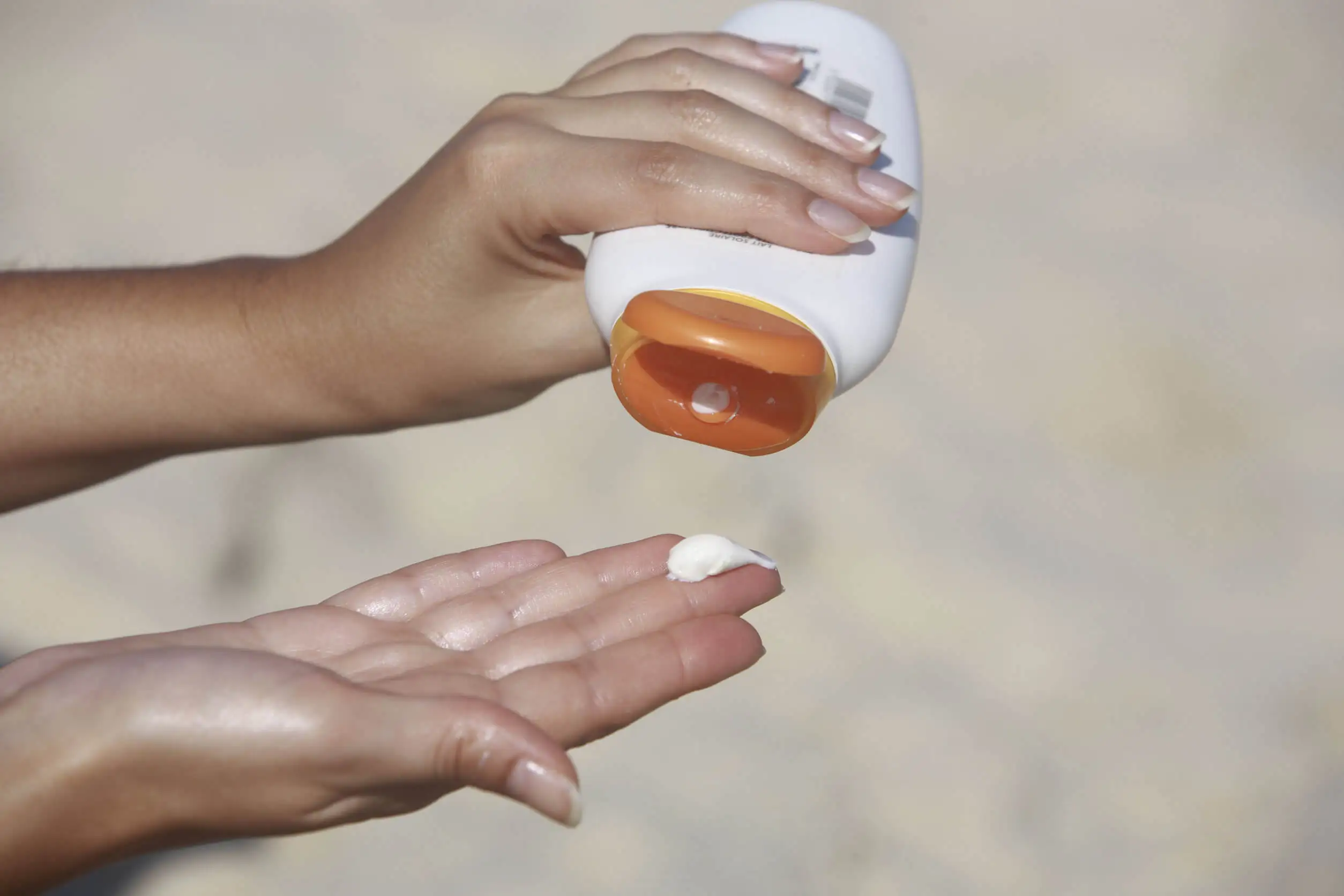How to Manage Lupus Photosensitivity


Written and verified by the doctor Mariel Mendoza
Photosensitivity caused by lupus is one of the most common clinical cutaneous manifestations of the disease. People with systemic lupus erythematosus (SLE) should be careful about exposure to sunlight and artificial light.
Symptoms suffered from increased photosensitivity include the following:
- Fever.
- Sunburn.
- Joint pain and swelling.
- Aggravation of fatigue and generalized weakness.
However, by following a few tips, it is possible to live with SLE and counteract the increased sensitivity to light. That is what we will discuss in this article.
What is lupus photosensitivity?
Systemic lupus erythematosus is an autoimmune disease caused by antibodies that attack the body’s own cells. It usually appears between the second and fourth decade of life and is more frequent in women.
It can have generalized symptoms (systemic) or only cutaneous symptoms (in SLE). cutaneous lupus erythematosus). Acute outbreaks or crises, resulting from increased inflammatory activity, include skin changes, muscle and joint pain, weight loss, fever and fatigue.
The intensity and duration of each outbreak is very specific. There is usually long-term multi-organ involvement as well, including kidneys, heart, lungs, central nervous system and the skin itself.
Effect of photosensitivity caused by lupus
In both systemic lupus erythematosus and cutaneous lupus erythematosus there is involvement from exposure to ultraviolet (UV) rays, regardless of whether they come from sunlight or artificial light. This is known as photosensitivity and can manifest itself in different ways.
In patients with lupus, UV radiation is associated with clinical skin manifestations. Up to 75% of patients present photosensitivity caused by systemic lupus erythematosus. This value can rise to almost 99 % in patients with cutaneous lupus erythematosus.
The penetration of UV rays into the epidermis and dermis causes changes in DNA. More free radicals are produced and oxidation reactions appear in the cells of the immune system as well as in the endothelium of blood vessels.
This autoimmune attack leads to the release of inflammatory mediators. Cell apoptosis (programmed cell death) then ensues, which could trigger a flare-up of the disease.
Lupus photosensitivity can manifest as a rash and generalized itching.
Tips for coping with lupus photosensitivity
Lupus photosensitivity will occur at some point. That is why it is important that, when living with this disease, the person is able to implement daily protective measures. Among these, the most important are the following.
1. Always use sunscreen
People with lupus photosensitivity should use sunscreen at all times, even if it is cloudy. Commercial options are many and include moisturizers with sunscreen, sprays, make-up powders, as well as body or face creams.
Apply sunscreen even when indoors.
Reapplication every 2 hours is best. If there is direct exposure to the sun due to being at the beach, for example, reduce the time should to 1 hour.
The highest sun protection factor (SPF) available should be purchased. If you will be outdoors, an SPF of 70 is recommended.
It’s important that sunscreen is applied generously and with greater emphasis on the neck, forehead, face, behind the ears, shoulders, back of the arms, and upper back.

2. Have clothing with sun protection factor in the closet
For cases of photosensitivity caused by lupus, it is best to use fabrics with sun protection factor greater than 50. There are all types of clothing with UV protection, including bathing suits.
Although not all clothing provides the same protection, you should opt for fabrics with high fabric density and, for walks on the beach or long trips in the car, prefer long-sleeved shirts and long pants.
Sunglasses should be part of the attire, even when driving the car. Photosensitivity due to lupus also affects the eyes and can lead to lesions around and inside the eyeball.
3. Beware of UV rays indoors
Keep curtains down and blinds closed. Also, dim the lights or use low wattage bulbs.
UV rays from artificial light are just as harmful as those from sunlight, so don’t underestimate their effect on the skin. Household bulbs should be of the lowest possible intensity, preferring LED light.
Fluorescent and halogen bulbs are not optimal.
There are blinds that block ultraviolet rays. You can consult them in specialized stores. Likewise, there are ways to tint home windows to block some sunlight penetration.
4. Limit exposure time if you have lupus photosensitivity
In cases of photosensitivity caused by lupus, only 15 to 30 minutes of sunshine daily is sufficient to produce the required amount of vitamin D. In addition, avoid the hours when the sun’s rays are most intense.
The ideal times for safe sun exposure are in the morning (between 8 a.m. and 10 a.m.) and in the evening (after 6 p.m.). Other intervals raise the danger of skin damage.
5. Review your medications
Some medications can worsen photosensitivity caused by lupus. Among them, according to scientific studies, there is a group that constitutes the most frequent:
- Antibiotics: such as doxycycline and tetracycline.
- Analgesic and anti-inflammatory drugs: such as naproxen and piroxicam.
- Antihypertensives: such as loop diuretics (hydrochlorothiazide) and angiotensin-converting enzyme inhibitors (ACE inhibitors).
- Immunosuppressants: such as methotrexate. Methotrexate, in particular, is one of the most commonly prescribed drugs in the context of lupus.
It is always advisable to consult a professional if we notice changes in the skin when starting a new treatment. A doctor can assessment to find out whether you must withdraw the active ingredient or change the regimen to a similar one.

Read Do You Know How to Remove Sunscreen from Your Skin Correctly?
Care of lupus photosensitivity starts with knowledge
Those who have photosensitivity caused by lupus should be upfront with their loved ones, clarifying the need for protection. Others should understand certain measures that, although they may seem extreme, are essential.
Being careful about exposure to any type of light, regardless of whether it is solar or artificial, makes a difference.
Acute flare-ups of the disease are very painful and uncomfortable. Thus, reducing them through proper light protection will enhance the quality of life. Finally, there should be involvement from friends and family.
All cited sources were thoroughly reviewed by our team to ensure their quality, reliability, currency, and validity. The bibliography of this article was considered reliable and of academic or scientific accuracy.
- Bielsa I, et al Manifestaciones cutáneas del lupus eritematoso. Inmunología 2010;29(3). Disponible en https://www.elsevier.es/es-revista-inmunologia-322-pdf-S0213962610700172.
- Centro Nacional de Recursos sobre el Lupus. La exposición a la luz UV: lo que necesita saber. Lupus Fundation of America S.F. Disponible en https://www.lupus.org/es/resources/uv-exposure-what-you-need-to-know.
- Centro Nacional de Recursos sobre el Lupus. 10 formas de protegerse al aire libre. Lupus Fundation of America S.F. Disponible en https://www.lupus.org/es/resources/10-wearable-ways-to-protect-yourself-outdoors.
- Chomiciene, Anzelika, et al. “Rare cause of periorbital and eyelids lesions: Discoid lupus erythematosus misdiagnosed as allergy.” Annals of Allergy, Asthma & Immunology 119.6 (2017): 568-569.
- Drucker, Aaron M., and Cheryl F. Rosen. “Drug-induced photosensitivity.” Drug safety 34.10 (2011): 821-837.
- Kaleidoscope Fighting Lupus. Lupus and Photosensitivy: When the Sun is Your Enemy. Kaleidoscope Fighting Lupus Org S.F. Disponiblen en https://kaleidoscopefightinglupus.org/lupus-and-photosensitivity-when-the-sun-is-your-enemy-2/.
- Klein R. The risk of ultraviolet radiation exposure from indoor lamps in lupus erythematosus. Autoinmun Rev. 2009;8(4). Disponible en https://www.ncbi.nlm.nih.gov/pmc/articles/PMC2829662/.
- Marcano M, et al. Factores asociados con la respuesta inmunológica en el lupus cutáneo. Vitae UCV S.F. Disponible en vitae.ucv.ve/pdfs/VITAE_2523.pdf.
- Méndez S, et al. Lupus eritematoso cutáneo, una entidad multidimensional. Rev Med Inst Mex Seguro Soc 2015;53(6). Disponible en https://www.redalyc.org/pdf/4577/457744940016.pdf
- Sánchez S, et al. Lupus eritematoso: enfermedad autoinmune sistémica y órgano específica. Rev Biomed 2004;15. Disponible en https://www.medigraphic.com/pdfs/revbio/bio-2004/bio043e.pdf.
- Saurit V, et al. Manifestaciones mucocutáneas en pacientes con lupus eritematoso sistémico. Medicina (Buenos Aires) 2003;63. Disponible en www.scielo.org.ar/pdf/medba/v63n4/v63n4a02.pdf.
- Sociedad Española de Reumatología. (S.F.) El sol puede perjudicar los pacientes con enfermedades reumáticas. Biblioteca Virtual SER. Disponible en https://www.ser.es/sol-puede-perjudicial-los-pacientes-enfermedades-reumaticas/.
This text is provided for informational purposes only and does not replace consultation with a professional. If in doubt, consult your specialist.








